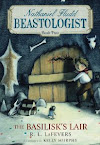Goal – What your character wants.
Motivation – Why do they want it? Why are they pursuing this goal?
Conflict – What is standing in their way.
Ideally you should be able to answer those questions on an external and internal level for your character.
One of the things I constantly stumble over is giving my protagonists an actual, bona fide goal. It takes me a while to figure out what they want, and sometimes I realize they don’t actually want anything. Or at least anything that they could articulate to themselves or anyone else.
However, it finally occurred to me that sometimes simply allowing oneself to want something can be a dramatic act all its own. In fact, I wonder if that’s one of the reasons I write kids books, because they are immersed in learning they have the right and the power and eventually the responsibility to act, not just observe or get carried along. Maybe that thematic issue kind of clusters around kids books. Or maybe that’s just one of my personal themes. Not quite sure about that…
Anywho, sometimes I have more luck by asking myself what my characters needs or longs for. Those words seem less self aware than goal, and especially with young protagonist, having an unarticulated need seems a more realistic way to drive their actions. At least initially.
Often I will start with just the germ of an idea; What if a girl could see curses and black magic on artifacts in a museum that no one else could see? Then I have to step back and decide what kind of girl would have this skill, and how it would affect her. Then I massage and poke and scratch my head until I have at least some semblance of GMC. For Theo, it was pretty easy.
Goal: To neutralize black magic and curses before it harmed anyone
Motivation: Because it was nasty, vile stuff that could cause great harm to those she loved; plus she was the only one who could see it, so the responsibility landed in her lap.
Conflict: She was only a child, with few resources; no one would believe her if she tried to explain; and certain bad guys wanted to let use that magic for their own gains.
Knowing that allowed me to begin to design the framework of the structure of the novel; what the inciting incident would be, what the turning points might look like, how the conflict and tension would rise.
But that was only the externals. To give the novel depth, I had to find a way to put what I knew about Theodosia emotionally onto the page. These physical events had to force her to some new understanding or awareness on her journey to becoming an adult.
I knew that one of the things that Theodosia hungered for was her parent’s attention as she was often overlooked. (Luckily, there was a fairly hands-off child rearing philosophy in 1907, so her parents didn’t appear to be horrid people.) She also wanted their professional respect, perhaps simply an extension of the above, since her parents were consumed by their professions, she felt that would be the best way to gain their attention, with her professional expertise.
For me to be able to develop the internal GMC, I often have to look to my character’s wounds or scars; what is lacking in their life, what hole are they trying to plug up, for those are often what drive our actions. So the internal GMC might look something like this (and notice how I word them differently so they make sense to me):
Goal (Emotional need/longing/desire): To be reassured that her parents really do care about her.
Motivation (Why she has that longing/Emotional Wound): Emotionally abandoned by her parents
Conflict (What prevents her forward growth): Parent's preoccupation with selves, child-centric perspective
Dixon has designed a nifty little GMC table that looks a lot like a tic-tac-toe square and goes something like this:

Can you fill in those blanks for your character?
A couple of additional things: Goals can be to NOT want something, to NOT move, or NOT go to a new school. They can also change over the course of a book as they character grows or acquires new knowledge.

















1 comments:
Your posts are coming at a great time for me! Thanks for all the effort you're putting in!
Post a Comment